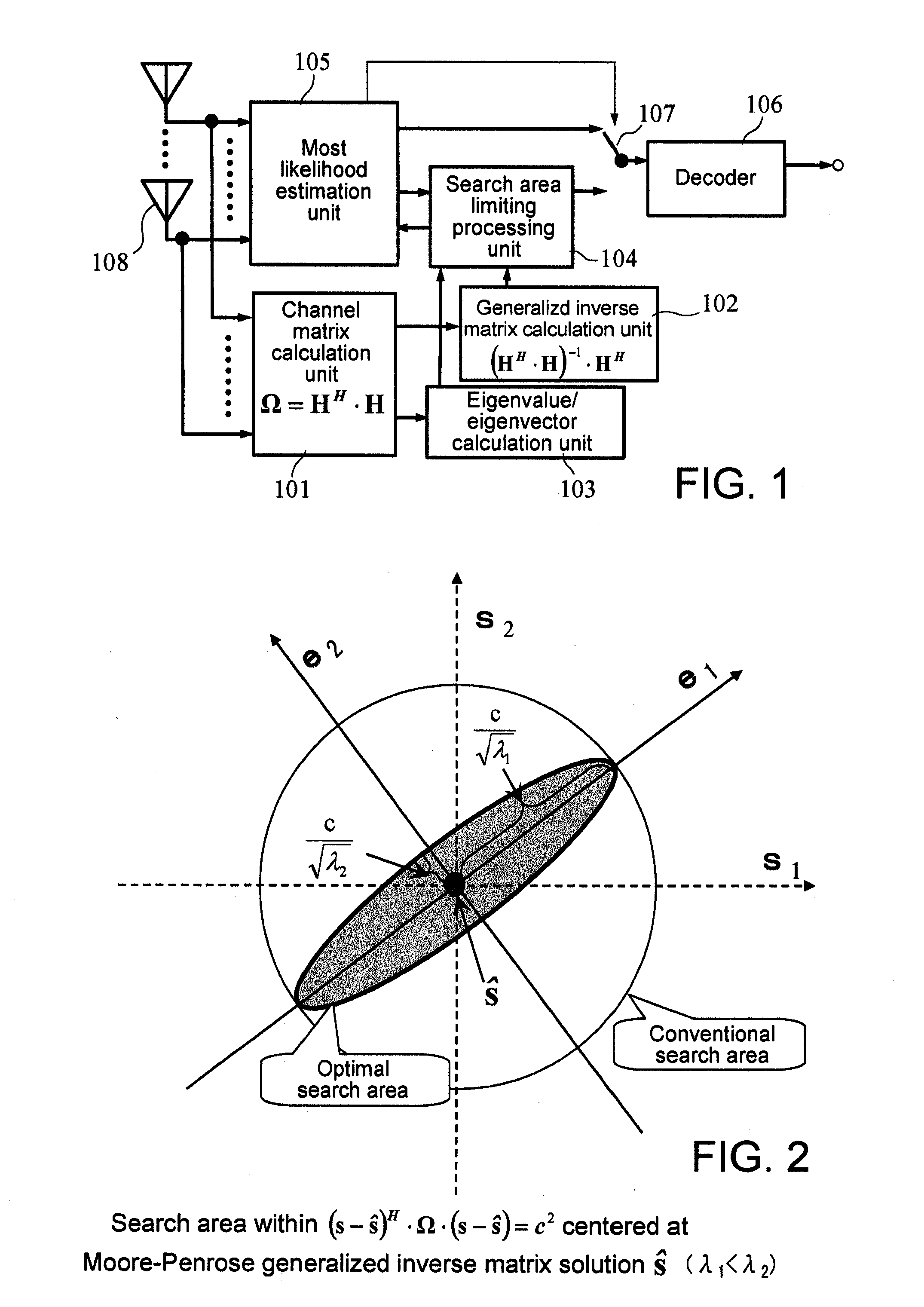MIMO decoder and MIMO decoding method
a decoding method and mimo technology, applied in diversity/multi-antenna systems, amplitude demodulation, multiplex communication, etc., can solve the problems of detection errors, detection errors, and diversity gain, and achieve the effect of increasing the communication path capacity, reducing complexity, and increasing speed
- Summary
- Abstract
- Description
- Claims
- Application Information
AI Technical Summary
Benefits of technology
Problems solved by technology
Method used
Image
Examples
Embodiment Construction
[0083]Next, preferred exemplary embodiments of the present invention will be described with reference to the drawings. First, a theoretical background of the present invention will be shown in an analytical fashion.
[0084]A variety of calculation amount reducing techniques have been conventionally known in MIMO systems, where the complexity thereof is attributable to a proper limiting process for a search area of a transmission signal vector which would has been transmitted from a transmission antenna, or a search area for each element in the transmission vector. Accordingly, first shown is that the proper search area differs in different radiowave propagation environments in an analytical fashion.
[0085]Assuming that a reception signal vector y(i) having nR reception antennas at sampling time i is represented by:
y(i)=[y1(i)y2(i)⋮ynR(i)],(1)
and a transmission signal vector s(i) having nT transmission antennas is represented by:
s(i)=[s1(i)s2(i)⋮snT(i)],(2)
then, using a channel matrix H...
PUM
 Login to View More
Login to View More Abstract
Description
Claims
Application Information
 Login to View More
Login to View More - R&D
- Intellectual Property
- Life Sciences
- Materials
- Tech Scout
- Unparalleled Data Quality
- Higher Quality Content
- 60% Fewer Hallucinations
Browse by: Latest US Patents, China's latest patents, Technical Efficacy Thesaurus, Application Domain, Technology Topic, Popular Technical Reports.
© 2025 PatSnap. All rights reserved.Legal|Privacy policy|Modern Slavery Act Transparency Statement|Sitemap|About US| Contact US: help@patsnap.com



